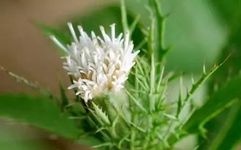Source: Classical Chinese Medicine
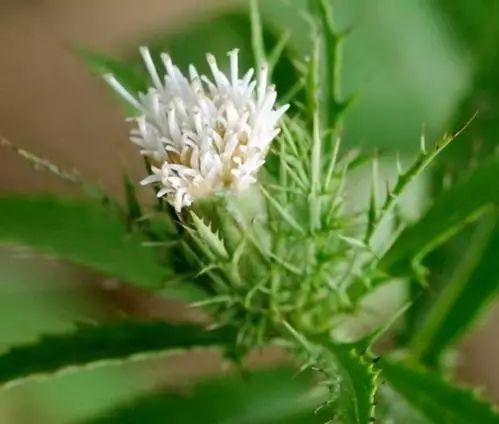
Cang Zhu (Atractylodes) has a pungent and bitter taste, and is warm in nature. It enters the Spleen, Stomach, and Liver meridians. Its functions include drying dampness, strengthening the Spleen, dispelling wind and cold, and improving vision. It is used for abdominal distension, diarrhea, edema, beriberi, rheumatic pain, wind-cold colds, and night blindness.
Clinically, it is primarily indicated for fatigue and lethargy caused by dampness obstructing the Spleen and Stomach; abdominal distension; loss of appetite; nausea and diarrhea; phlegm-dampness; edema; exterior syndromes with dampness; heavy pain in the head and body; rheumatic conditions; and weakness of the limbs.
The Legend of Cang Zhu
Once there was a scholar named Xu, a title given to the renowned physician Xu Shuwei of the Song Dynasty. It is said that in his youth, Shuwei was exceptionally diligent, studying late into the night before going to bed. He had a habit of drinking alcohol before sleep, perhaps believing in the saying, “A sip of wine before bed can extend life to ninety-nine!”
Years later, he often felt a gurgling in his stomach, experienced pain in his side, and had a reduced appetite. Every ten to fifteen days, he would vomit a bitter and sour gastric fluid. In summer, his left side would not sweat, while only his right side would. What kind of strange illness was this? Xu Shuwei fell into deep thought and sought treatment everywhere.
To his dismay, despite consulting many famous doctors, he found no relief and was very troubled. Thus, Xu abandoned the belief that “doctors cannot treat themselves” and began to save himself. He carefully analyzed his condition and concluded that his illness was primarily caused by “dampness obstructing the Stomach.”
Therefore, following his academic principle of “using precise medication,” he chose Cang Zhu as the main herb, using 1 jin (500g) of Cang Zhu powder, 15 jujubes, and half a liang (15g) of raw sesame oil to make small pills, taking 50 pills daily. He gradually increased the dosage to 100-200 pills per day. After several months of treatment, his strange illness gradually improved until he was completely cured.
The Efficacy of Cang Zhu
Why does Cang Zhu have such power and a remarkable therapeutic effect on Xu Shuwei’s strange illness? It turns out that Xu had a fondness for drinking, which harmed his Spleen and Stomach. When the Spleen is deficient and fails to transport, dampness cannot be transformed, leading to “dampness obstructing the Stomach,” resulting in the gurgling sound in the stomach, lack of sweating on the left side in summer, and vomiting of gastric fluid.
The Spleen belongs to the Earth element, which prefers warmth and fragrance. Cang Zhu has an aromatic scent, is pungent and warm, and enters the Spleen and Stomach meridians. The medicinal properties align perfectly. Cang Zhu, being aromatic, is adept at awakening the Spleen and transforming dampness; dampness is a Yin pathogen that can be transformed with warmth.
Xu Shuwei accurately diagnosed his condition and selected the appropriate herb, achieving remarkable results with just one herb. It is also important to recognize that Xu’s insistence on long-term medication and gradually increasing the dosage was a wise strategy. He understood that dampness is sticky and difficult to eliminate quickly. Only by persisting with long-term medication and gradually increasing the dosage could he enhance the herb’s potency in the body and ultimately conquer dampness.

Treating Rheumatism
The primary efficacy of Cang Zhu is to strengthen the Spleen and eliminate dampness, and it can also dispel wind and cold. In Traditional Chinese Medicine, Cang Zhu is commonly used to treat rheumatism. In ancient times, rheumatism was referred to as “bi syndrome,” believed to be caused by a combination of wind, cold, and dampness. However, in the southern regions where temperatures are higher, dampness can easily combine with heat, leading to different types of rheumatism. Regardless of the type, Cang Zhu can be used for treatment.
Here is a small formula: 30g of Cang Zhu, 10g of Gui Zhi (Cinnamon Twig), and 30g of Tou Gu Cao (Drynaria). Boil these three herbs together and use the decoction to soak the painful areas, or apply a towel soaked in the herbal juice to the painful areas for effective relief from pain caused by rheumatism.
Treating Diabetes
Diabetes, known in TCM as “Xiao Ke,” includes water-damp type, Yin deficiency type, and Spleen-Kidney Yang deficiency type. Patients with the water-damp type generally have a whitish tongue with a thin white coating; those with Yin deficiency show a red tongue with a thin rapid pulse, thirst, and dryness; while those with Spleen-Kidney Yang deficiency present with a pale complexion, cold limbs, and abdominal distension.
Cang Zhu is particularly suitable for patients with water-damp and Spleen-Kidney Yang deficiency types. Here is a specific formula for treating Xiao Ke: 30g of Cang Zhu, 15g of Xuan Shen (Scrophularia), 30g of black sesame, and a bit of silkworm cocoon, decocted in water. Cang Zhu has a strong medicinal property, while Xuan Shen, which nourishes Yin, can balance the drying nature of Cang Zhu. Silkworm cocoon has been used since ancient times to treat Xiao Ke, and black sesame nourishes the Kidneys. This combination is effective for treating diabetes.

Discussion on Cang Zhu’s Role in Spleen Function and Dampness
In the Yuan Dynasty, Zhu Zhenheng stated: “Cang Zhu treats dampness, effective in all areas, and can resolve various stagnations, including phlegm, fire, dampness, food, qi, and blood stagnation, all caused by abnormal transformation and transportation, leading to diseases in the middle burner. Therefore, the herb must facilitate both ascending and descending actions; to ascend, it must first descend, and to descend, it must first ascend. Thus, Cang Zhu, as a herb of the Foot Yangming Stomach meridian, with its pungent and strong flavor, strengthens the Stomach and Spleen, invigorating the qi of grains, can directly enter various herbs…” This is indeed a profound insight. Liu Shouzheng of the Jin Dynasty also remarked: “Cang Zhu is a herb that scholars should pay attention to,” indicating its broad efficacy. In my clinical practice, I often use this herb and summarize its applications into four main points.
The functions and activities of the body’s organs depend on the Spleen and Stomach’s ability to transport and transform the essence of food and water. When the Spleen is strong, all organs are healthy; when the Spleen is weak, all organs are also weak, hence the saying, “The Spleen is the foundation of postnatal life.” Cang Zhu dries dampness without harming Yin; when dampness is eliminated, the Spleen becomes healthy, and when the Spleen is healthy, dampness is transformed. Therefore, in treating chronic diseases, the principle of “the Spleen governs the four organs” is paramount, and Cang Zhu is used as the monarch herb to invigorate the source of transformation and rejuvenate the body. For conditions like organ prolapse, hypokalemia, emphysema, and coronary heart disease, Cang Zhu is effective, especially in treating elderly patients with Spleen and Stomach diseases.
Ancient sages have said that it is better to strengthen the Spleen than to tonify it, and better to regulate the Spleen than to strengthen it. When the Spleen’s function is strong, the generation of qi and blood is ensured. Therefore, ancient practitioners often combined Shudi (Rehmannia) with Sha Ren (Amomum) for blood tonification, and in nourishing and rich tonifying formulas, Cang Zhu is often added to prevent the cloying nature of tonics and promote the absorption of the herbs. For example, in Gui Pi Decoction and Bu Zhong Yi Qi Decoction, Cang Zhu is included to avoid the issue of fullness after taking the medicine. I once treated a patient with aplastic anemia who had previously been given strong tonics without improvement in blood counts. After adding Cang Zhu, the results were remarkable. Additionally, when used with cold and cool herbs, it can prevent damage to the Stomach, which is a clever application.
Phlegm and blood stasis are both sticky Yin pathogens, so to resolve phlegm and stasis, Yang qi must be mobilized. Cang Zhu excels in transporting the Spleen and eliminating phlegm-dampness. To resolve blood stasis, qi must be activated; however, based on the shared origin of phlegm and stasis and the Spleen’s governance over the four organs, Cang Zhu is often added to accelerate the effect when phlegm and stasis have long been stagnant. For instance, using Cang Zhu in Ze Xie Decoction to treat ear-related dizziness, or in Ling Gui Zhu Gan Decoction to prevent and treat asthma, or as a single herb decoction for suspended fluid, diabetes, and night blindness, all have proven effective.
According to the principle of “the Liver transmits to the Spleen, one must first strengthen the Spleen” in treating the Spleen to prevent liver diseases, I have also achieved significant results. I recall in the autumn of 1962, I had an acute liver disease, and in addition to intravenous fluids, I was given tonics that were too rich, leading to dampness accumulation and white frothy phlegm filling the bowl, with transaminases rising to 500 units. I then applied Cang Zhu combined with Wu Ling San, and within a month, I recovered. I realized that strengthening the Spleen was more effective than tonifying the liver, and over the years, I have treated many cases of liver disease with this principle. During the outbreak of hepatitis A in Shanghai, I prescribed “Cang Zhu slices” to discharged patients, and the results were satisfactory.
The application of Cang Zhu should be skillfully combined; for those with severe cold-dampness, it is often used with Fu Zi (Aconite) and Rou Gui (Cinnamon); for damp-heat obstruction, it can be combined with Gan Lu Xiao Du Dan and Huang Lian; for damage to Stomach Yin, it can be paired with Shi Hu (Dendrobium), Xuan Shen, and Mai Dong (Ophiopogon); for damp-heat flowing through the meridians, it can be used with Shi Gao (Gypsum) and Gui Zhi; for Liver Yang with dampness, and symptoms like blurred vision and dry stools, it can be combined with black sesame; for qi deficiency, it can be supplemented with Huang Qi (Astragalus) and Sheng Ma (Cimicifuga), etc., which has become a common practice.
Zhu Danxi stated: “When qi and blood are harmonized, no diseases arise; when there is stagnation, various diseases occur.” The creation of the Yue Ju Wan, using Cang Zhu and Chuan Xiong (Ligusticum) to soothe the Liver, move qi, invigorate blood, and resolve stasis, demonstrates a great method for treating stagnation. Cang Zhu’s aromatic properties not only excel at drying dampness but also promote qi and relieve stagnation. When paired with Chuan Xiong, it harmonizes qi and blood, making it effective for various difficult-to-treat diseases, achieving the effect of “smoothing the blood and qi, allowing them to flow harmoniously, leading to peace.”
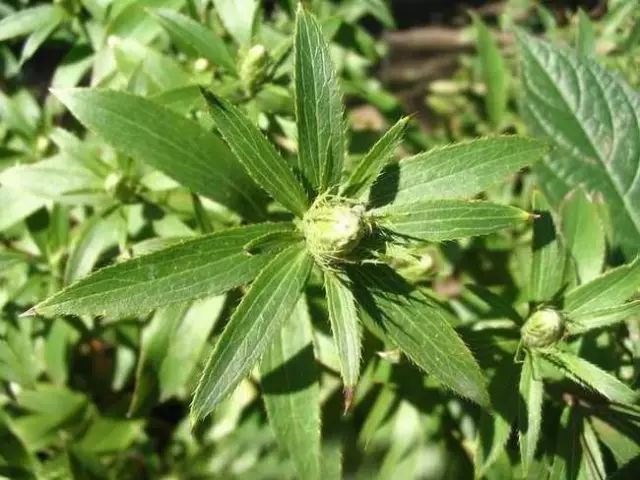
This article is for clinical thought reference only; non-TCM professionals should not attempt to self-medicate.
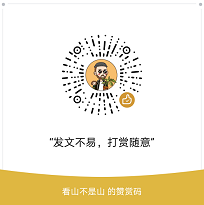
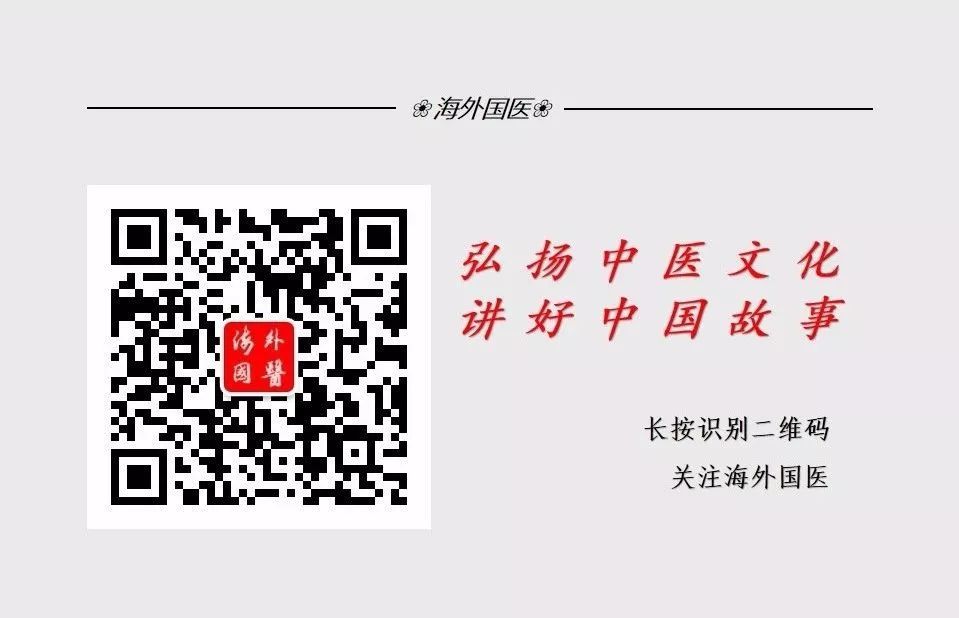
Click here to read: A formula from Zhang Zhongjing that cures chronic gastritis, gastric ulcers, and gastric distension!
A single rapid-acting heart-saving pill can treat over 20 diseases; don’t just use it for heart attacks, make sure to save it!
This is an article that silences critics of TCM; see how personnel from the Ministry of Science and Technology evaluate TCM!
Click “Read the original text“↙ to see more exciting content.

